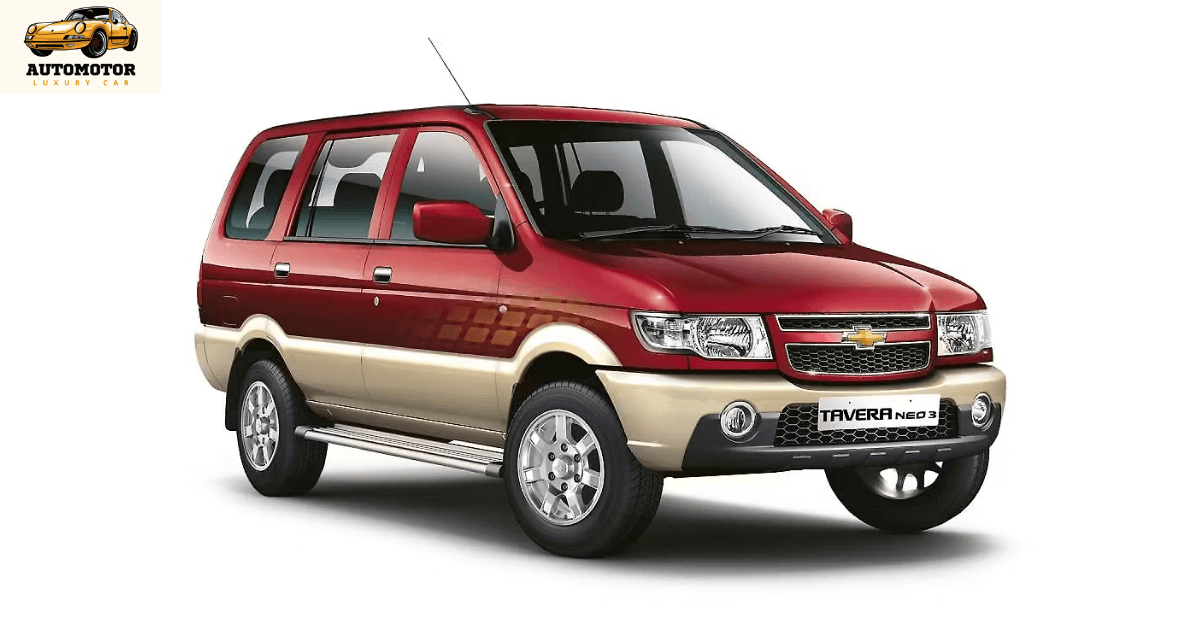When one talks about practical, no-nonsense vehicles that once ruled the Indian roads, the Chevrolet Tavera often finds a place in the conversation. Launched in India in 2004, the Tavera was General Motors’ answer to the growing demand for affordable, spacious, and reliable multi-utility vehicles (MUVs). Designed to cater to both family buyers and commercial fleet operators, the Tavera was a popular choice for over a decade, until Chevrolet’s exit from the Indian market in 2017.
Origins and Launch in India
The Chevrolet Tavera was originally based on the Isuzu Panther, a vehicle that enjoyed success in Southeast Asia. When General Motors introduced the Tavera to India, it did so with a clear goal: to compete directly with Toyota’s Innova and Mahindra’s Bolero in the MPV/MUV segment. The name “Tavera” was inspired by a small village in Portugal and was meant to reflect the car’s European roots and international appeal.
Design and Exterior
In terms of design, the Tavera was never intended to be flashy. It had a boxy, utilitarian shape with a tall stance and high ground clearance, which appealed to Indian buyers who valued function over form. The simple, straightforward design made it easy to maintain and repair, especially in semi-urban and rural areas. It featured chrome highlights, large headlamps, and a prominent grille that gave it a slightly upmarket look, particularly in the later BS-IV variants.
The Tavera’s wide dimensions and tall roofline allowed for spacious interiors, one of its biggest selling points. It could comfortably seat 7 to 10 passengers depending on the configuration, making it a favorite for large families, taxi operators, and tour agencies.
Interior and Features
Inside, the Tavera offered a roomy and practical cabin. While not luxurious, it came equipped with essential features such as air conditioning, power steering, and later models included power windows, central locking, and optional leatherette upholstery. The high roof and large windows gave passengers a sense of airiness, and even those seated in the third row had a decent amount of legroom.
The dashboard design was simple and functional, in line with the vehicle’s utilitarian nature. The focus was clearly on durability and ease of use rather than high-tech features or sophisticated aesthetics.
Performance and Engine Options
The Tavera came with a few diesel engine options over its lifespan. Early models were powered by a 2.5L Isuzu-derived turbo diesel engine, known for its durability and fuel efficiency. In later years, especially after the implementation of Bharat Stage IV norms, Chevrolet introduced the Tavera Neo and Neo 3 with BS-IV compliant engines. These models featured a 2.0L TCDi engine sourced from Sonalika (also seen in the ICML Rhino), which helped the Tavera remain relevant in an increasingly competitive market.
The Tavera’s performance was not about speed or acceleration—it was all about load-bearing, endurance, and low maintenance costs. The suspension setup, featuring a double wishbone at the front and leaf springs at the rear, was tuned for comfort on rough roads, making it ideal for rural routes and highway travel.
Fuel Efficiency and Maintenance
One of the key reasons for the Tavera’s popularity was its fuel efficiency. Even fully loaded, it managed to deliver around 12–14 km/l, which was quite respectable for a vehicle of its size and segment. Additionally, parts availability and low running costs made it a hit among commercial users.
Fleet operators especially appreciated the Tavera’s reliability. It was a car that could handle high-mileage usage without frequent breakdowns, making it a valuable asset for long-distance travel, staff transport, and shared taxi services.
End of Production and Legacy
Chevrolet eventually discontinued the Tavera in 2017 as the company decided to exit the Indian market. By that time, more modern MPVs like the Toyota Innova Crysta and Maruti Suzuki Ertiga had taken over the segment. Despite this, the Tavera continues to be seen on Indian roads, a testament to its long-lasting build and loyal user base.
Conclusion
The Chevrolet Tavera may not have been the most glamorous or technologically advanced vehicle of its time, but it earned a reputation as a reliable, practical, and hard-working MUV. Whether ferrying families across states or serving as a dependable people mover for fleet operators, the Tavera proved itself as a robust machine that met the needs of the Indian market. Even after Chevrolet’s exit, the Tavera’s legacy lives on—especially among those who value simplicity, durability, and utility in their vehicles.
